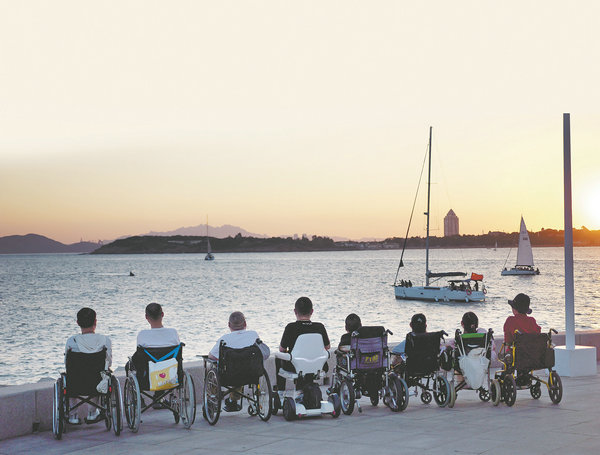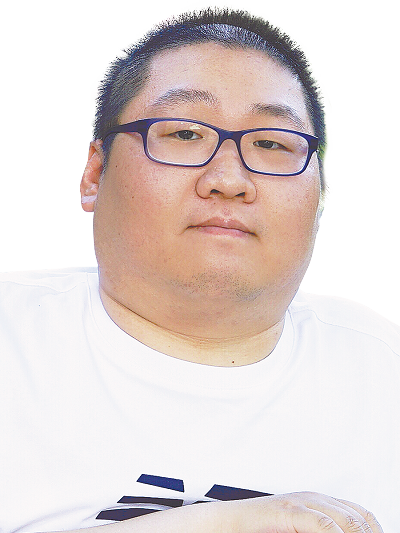

"Can I help you?" or "Do you need anything?" Xu Yong, 30, found himself frequently asked these questions as he made his way to Qingdao, Shandong province in September.
At times, the attention made him feel a bit self-conscious because he knew it didn't just come from Shandong people's renowned hospitality but also from the fact that Xu and his companions were traveling in wheelchairs. They have spinal muscular atrophy, or SMA.
This year, on Sept 1, the China Accessibility Construction Law came into effect. It was established to strengthen the creation of accessible environments, making access easier for disabled and elderly people, and promoting their comprehensive inclusion in society.

Simultaneously, a travel guide aimed at a specific group was taking shape. On Sept 29, also known as World Walking Day, the SMA Community Travel Guide was published.
This guide was initiated by the Meier Advocacy and Support Center for SMA, or Meier SMA. But everything, from its content to its art design, was the result of the collective efforts of SMA patients.

Gong Min, 34, who also suffers from SMA, became a staff member at the Meier SMA in 2018. He explained, "In the initial stages, the center primarily focused on guiding younger patients through the diagnosis and medication search process, but it hadn't done much for adult patients."
However, that changed when the center began hosting small group discussions, and the topic that generated the most enthusiasm was travel. "We hoped they wouldn't just think about traveling but would start believing that it's achievable for every SMA patient," said Gong.
As a result, the center organized more discussions on this subject. Some shared their experiences with air travel and wheelchair check-ins, while others provided insights into techniques for assisted position movements, such as transitioning from bed to wheelchair. Many conducted extensive research on potential travel destinations.
Medical professionals might be able to talk for hours about SMA, but when it comes to real-life challenges and practical solutions, the patients themselves are the true experts. The SMA Community Travel Guide was born out of these passionate exchanges.
By medical definition, SMA is an autosomal recessive genetic disease. This genetic defect results in the absence of a specific type of protein, one that fuels motor neurons responsible for transmitting signals from the brain to muscle junctions. For SMA patients, the lack of this protein leads to the gradual deterioration, loss, and reduction of motor neurons, resulting in the weakening of limb muscles, as explained by Xing Huanping, executive director of the Meier SMA.
In 2014, the global Ice Bucket Challenge raised awareness for amyotrophic lateral sclerosis (ALS). During that period, similar awareness campaigns in China typically centered on five diseases, including ALS and SMA, often causing confusion between the two.
According to Xing, while ALS typically onsets later in life, usually between the ages of 30 to 50, 80 percent of SMA patients begin exhibiting symptoms, such as delayed growth and weak limbs, before they turn two.
"I started using a wheelchair in high school, although I could walk a little with assistance before that," Xu said. "When I was young, my classmates called me 'ducky'. They didn't see me as a disabled person but just a friend who walked in a unique way."
Despite SMA having been recognized for over 20 or 30 years, accurate diagnosis and affordable medication only became available in recent years.
Gong believes that, before the advent of medication, an accurate diagnosis merely provided a name for the condition he had been dealing with.